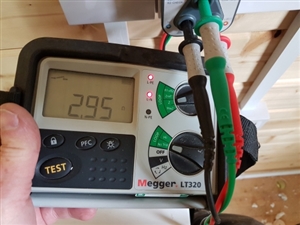
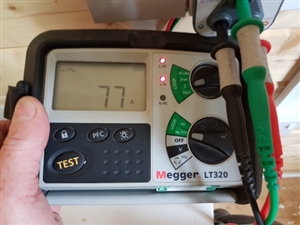
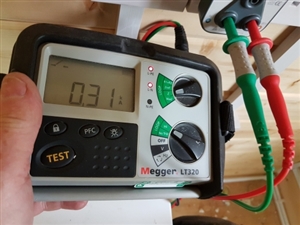
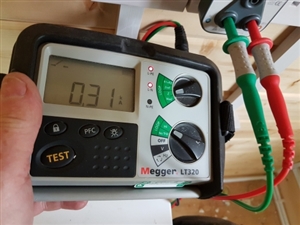
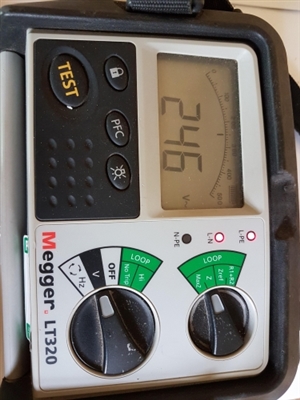
Given that the clause relating to L-E fauls is
411 .4.5 The following types of protective device may be used for fault protection:
(i) An overcurrent protective device
(ii) An RCD.
Where an RCD is used for fault protection the circuit shall also incorporate an over current protective device in
accordance with Chapter 43.
That in turrn calls up 0.2 sec, 0.4 sec on TT / TN respectively for socket circutis, and 5 sec and 1 sec for distribution circuits, I think this is a case of (iii), so the RCD has to meet the times for shock protection, for faults to the CPC or an earthed part.
so the MCB part only has to meet the much less onerous overcurrent requiermemnts
433.1.1 The operating characteristics of a device protecting a conductor against overload shall satisfy the
following conditions:
(i) The rated current or current setting of the protective device (In) is not less than the design current (Ib) of the
circuit, and
(ii) the rated current or current setting of the protective device (In) does not exceed the lowest of the current carrying
capacities (Iz) of any of the conductors of the circuit, and
(iii) the current (h) causing effective operation of the protective device does not exceed 1.45 times the lowest of
the current-carrying capacities (lz) of any of the conductors of the circuit
For adjustable protective devices, the rated current (In) is the current setting selected.
but that does not require disconnection in any particular time frame, except for the (very) general requirement
430.3 General requirement
A protective device shall be provided to break any overcurrent in the circuit conductors before such a current could
cause a danger due to thermal or mechanical effects detrimental to insulation, connections, joints, terminations or
the surroundings of the conductors.
So the breaking time for L-N faults is set by cable damage considerations, which is adiabatic for high PSSC cases, but can be very slow if the PSSC is low enough- down to 'never' if the PSSC is less than the cable current rating - in those cases it is voltage drop that defines what is the limiting factor.
So, on gensets and other sources of unknown supply impedance, likee caravan pitches, start with an RCD or earth fault relay, and all the other concerns vanish, except voltage drop.
mapj1:
. . . this is not good for the wire, but not dangerous for an earthed person, because as soon as they touch the faulty part some current is diverted, L and N current is not equal, and the RCD kicks in. . .
We're about to take you to the IET registration website. Don't worry though, you'll be sent straight back to the community after completing the registration.
Continue to the IET registration site